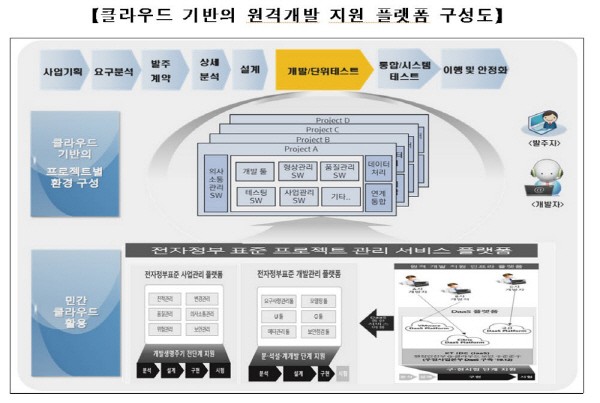
The software industry will develop a 'cloud remote development support platform' within this year to revitalize remote development and promote the application of public pilot projects. Attention is drawn to whether remote development, which has spreading slowly due to security concerns, will enter a new era.
The Korea IT Service Industry Association (ITSA) has recently launched the 'Remote Development Revitalization Task Force' participated by representatives of ITSA member companies, expert consultants, and university professors.
To improve working conditions of software developers, the TF discussed ways to promote 'remote development' instead of remote site development. Unlike remote site development, which means a physical location, 'remote development' broadly refers to performing and managing software development tasks in a virtual environment.
The revised SW Promotion Act which came into effect at the end of last year requires that operators propose a place for implementation of public software projects and the ordering party to first review them. However, this system has not been fully established since there is no enforcement. Even this is a provision for remote site development, so there are no legal or institutional regulations for remote development.
In the first meeting, the TF agreed that remote development was needed to advance the workstyle, strengthen the capabilities of SW developers, and create jobs for young people. They also agreed that remote development was necessary to improve the chronic practice of requiring development work near the ordering client and to protect developers from the spread of COVID-19.
Concerns over security and project management efficiency are obstacles to revitalizing the remote development. Experts explain that such concerns can be resolved with information technology (IT) and cloud development environments. Public software projects with some companies have already been developed remotely in the cloud network.

The TF has completed the basic design of the 'Cloud-based Remote Development Support Platform Construction Plan', which was in progress from last year for remote development.
The cloud remote development support platform supports various tools and systems necessary for SW development in a virtual space. Development tools between public SW project management area and development areas can be divided, allowing the ordering client and the recipient to choose and use by consensus.
The TF will develop a cloud remote development support platform as a private investment project. By forming a private-public-academic expert council that has expanded and developed the TF, a pilot project to establish a remote development platform for the government and public institutions will be carried out within this year. The plan is to improve functions and performance as well as expand and stabilize the cloud remote development platform through this.
Acceptance by the public sector is critical to the project success. A TF official explained that the cloud remote development support platform can be sufficiently applied not only to public institutions but also to private companies.
Vice Chairman of ITSA Hyo-geun Chae said on the 13th, “Since most governments or institutions that order public software projects are headquartered in provincial areas, software companies must set up a separate office near the ordering body or dispatch their employees for long-term work. Remote development is a matter directly related to improving the working environment and treatment of software developers.”
He emphasized, “If remote work becomes possible, even competent female developers whose careers have been cut off due to pregnancy, childbirth, or childcare will have the opportunity to get back on job again. We look forward to having the interest and support from both the government, clients, and IT service companies, as remote development can reduce firms’ local and housing expenses and prevent the attrition of excellent developers and deterioration of quality.”
By Staff Reporter Ho-cheon Ahn hcan@etnews.com